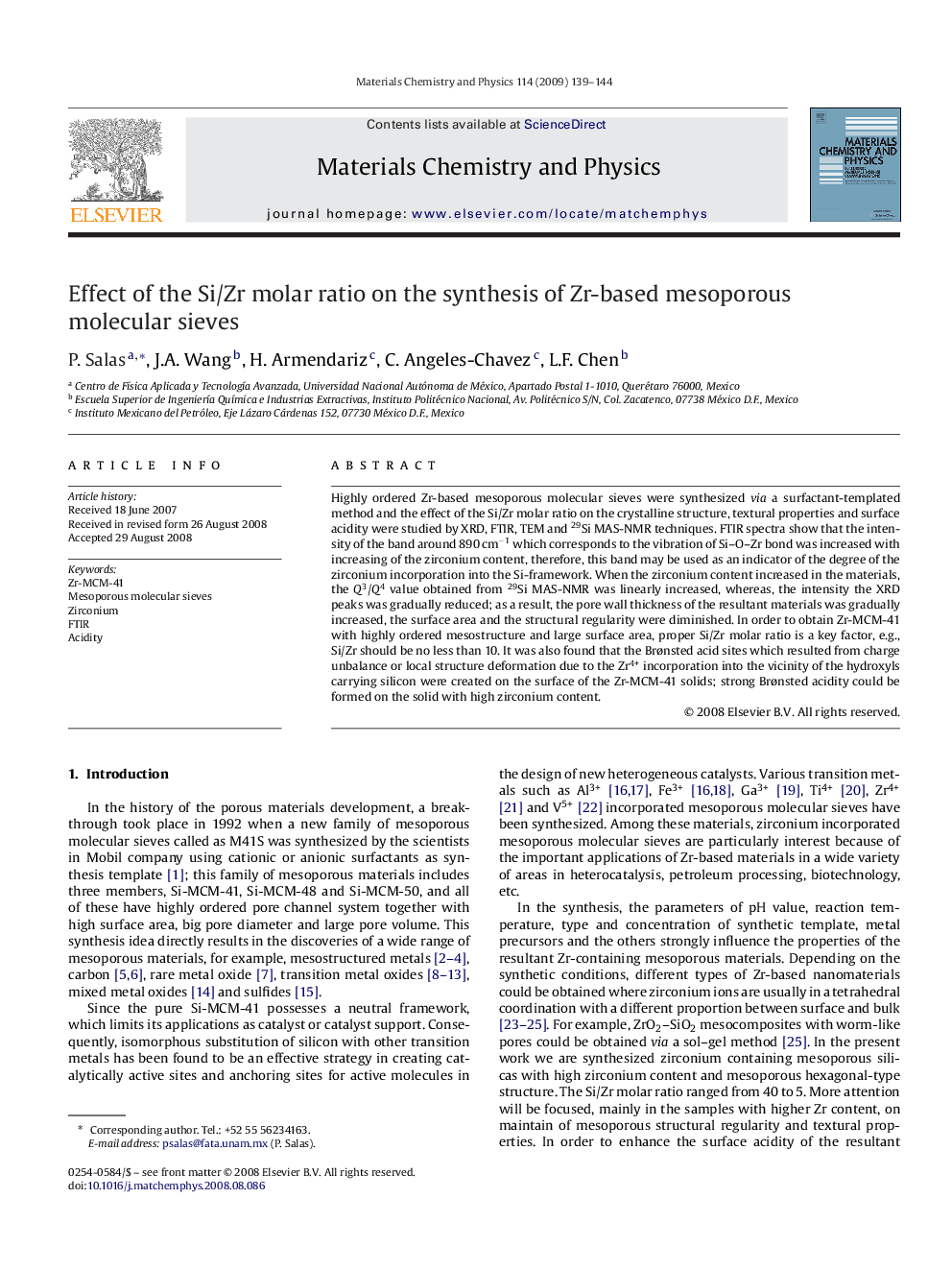| Article ID | Journal | Published Year | Pages | File Type |
|---|---|---|---|---|
| 1526144 | Materials Chemistry and Physics | 2009 | 6 Pages |
Abstract
Highly ordered Zr-based mesoporous molecular sieves were synthesized via a surfactant-templated method and the effect of the Si/Zr molar ratio on the crystalline structure, textural properties and surface acidity were studied by XRD, FTIR, TEM and 29Si MAS-NMR techniques. FTIR spectra show that the intensity of the band around 890 cmâ1 which corresponds to the vibration of Si-O-Zr bond was increased with increasing of the zirconium content, therefore, this band may be used as an indicator of the degree of the zirconium incorporation into the Si-framework. When the zirconium content increased in the materials, the Q3/Q4 value obtained from 29Si MAS-NMR was linearly increased, whereas, the intensity the XRD peaks was gradually reduced; as a result, the pore wall thickness of the resultant materials was gradually increased, the surface area and the structural regularity were diminished. In order to obtain Zr-MCM-41 with highly ordered mesostructure and large surface area, proper Si/Zr molar ratio is a key factor, e.g., Si/Zr should be no less than 10. It was also found that the Brønsted acid sites which resulted from charge unbalance or local structure deformation due to the Zr4+ incorporation into the vicinity of the hydroxyls carrying silicon were created on the surface of the Zr-MCM-41 solids; strong Brønsted acidity could be formed on the solid with high zirconium content.
Related Topics
Physical Sciences and Engineering
Materials Science
Electronic, Optical and Magnetic Materials
Authors
P. Salas, J.A. Wang, H. Armendariz, C. Angeles-Chavez, L.F. Chen,
